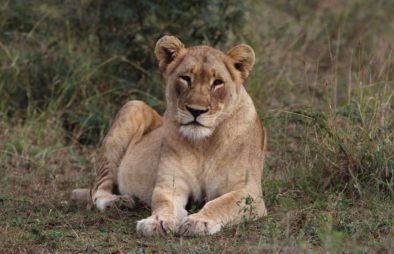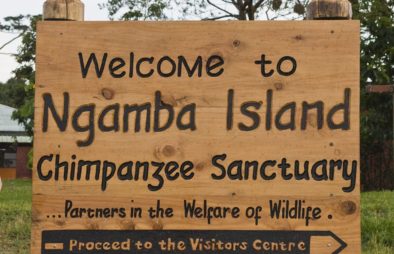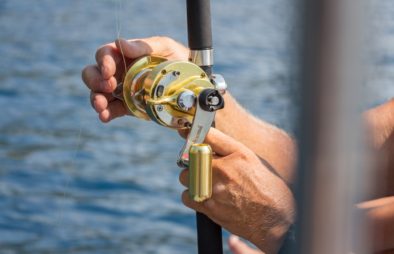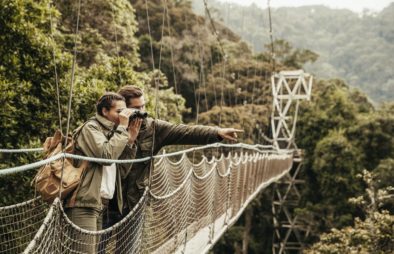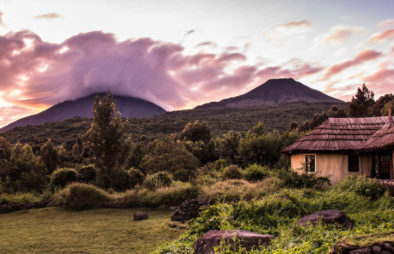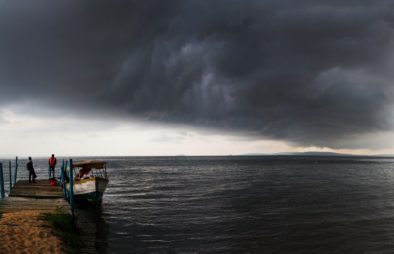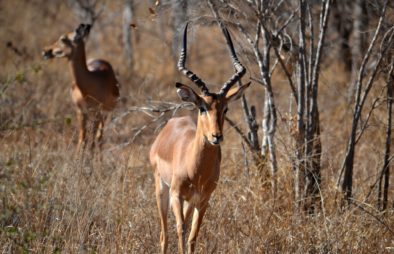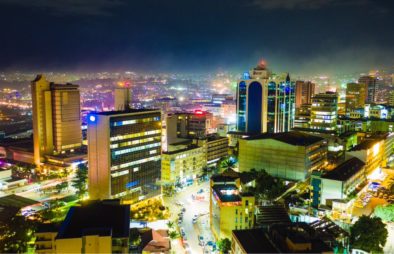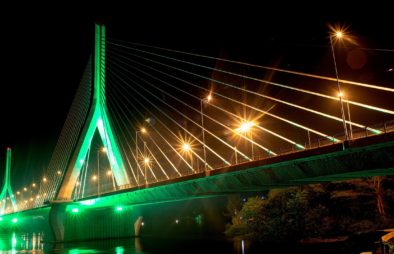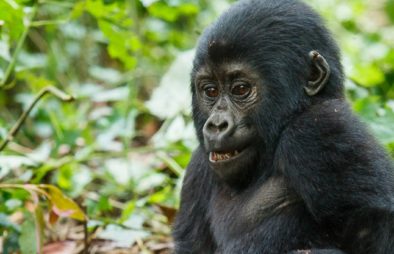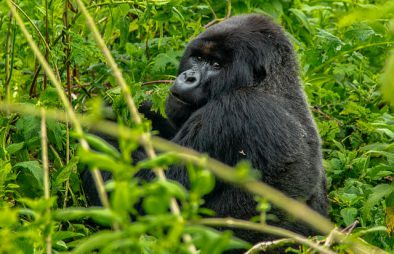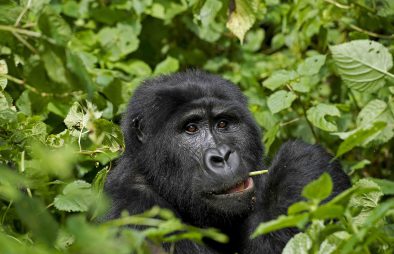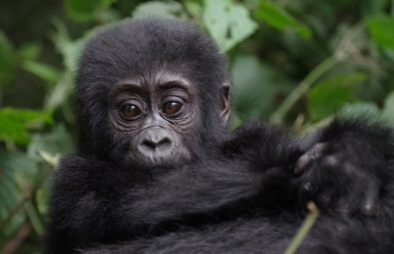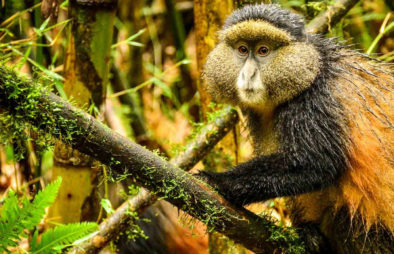Semuliki Valley National Park
Where else if not Semuliki National Park – one of the most gifted safari parks in Uganda, one of the most rewarding vacation destinations in the East African continent.
Visit and enjoy the vibes of the most hospitable people on earth, the wildlife species, lip-smacking cuisines, stunning landscape and flourishing plantations among others.
Semuliki national park covers 220 sq.km of land in the furthest district of Bundibugyo at backdrop of the stunning snowcapped Mountain Rwenzori, lying at the base of the semiliki edge of the Albertine Rift valley. Semuliki forest embodies the eastern section of Ituri forest found in the Democratic Republic of Congo in the central part of the continent of Africa. It is one of the oldest forests in the continent of Africa, with some plants aging to about 1800 years ago.
Most of the attraction found in the park is related to those in the ancient days, and those in the central part of Africa; talk of the thatched huts featuring the West African palm oils, trees and a profusion of birds. River Semuliki is at the border with D.R. Congo connecting through the Congo River. It is a live stream for the park residents.
First, as a forest reserve in 1932, it had to wait until 1993 to upgrade to a national park status, under the management of Uganda wildlife Authority. A move to conserve the place was after evacuating forest habitats to cub the Tsetse fly infections and to protect wildlife species in this place. The park is one of those very green and intact, with a record of over 441 rare bird species, about 53 mammal species, plants, primates and reptiles. The four ethnic groups living outside the park include Batwa pygmies regarded as hunters and gatherers, as well as the Bamba.
From the time this park was upgraded, it was opened for travelers all around, for honeymoon, birding experience, weekend escape, research, photography and educational tours among others. The park’s temperature is moderate, ranging around 30”c and the annual rains at about 1250mm, around March to May and September to December.
Mapping Semuliki National Park – places of much interest.
Don’t get lost or spend a lot of valuable time wondering how to access Semuliki national park. From D.R. Congo, Rwanda or Uganda’s Kampala city, you can get access to the park. Using a 4WD, or any other safari vehicle, two routes can be used; about 180km from Kampala via Mubende to Fort portal, or Kampala via Masaka to fort portal, Masaka and Kasese. The second route is longer, yet very rewarding, with lots of breathtaking sceneries, Lake Mburo national park on the highway and a variety of flourishing plantations.
The park headquarters, where visitors are received, briefed and documents verified is at Ntandi; about 6kms from the main road. The main gate is Sempaya Gate, situated about 59 km from Fort portal city.
Sempaya hot springs.
This is one of the top attractions around the park. The hot spring gurgling from the ground reveal the force of subterranean forces, which have been forming the Great Rift Valley, for more than 14 million years ago. The area lies low at about 670m above sea level, falling on the flat floor.
There are two stunning hot springs;
The Male hot springs known as Bitente located in the middle of a swampy area and measuring about 12m in diameter. The other is the Female Hot spring; the most viewed and very stunning. It is called Nyansimbi; translated from a local word as “the female ancestors”. It is very magnificent; carrying the appearance of a female feature. It has a boiling geyser, boiling at 100”C, gushing steam and bubbling water to about two meters. Some locals use the place to carry on with some rituals and also boil eggs. Visitors are also urged to boil their eggs and then eat at the female hot springs, in addition to taking photos.
Semuliki River.
Located along the Congo Basin, striding along the park border with Democratic Republic of Congo; flowing from mount. Rwenzori to Lake Albert. This 169km trail is marked by forest fringes and valleys and the river harbors a variety of hippos and crocodiles. Visitors walk through the riverbank while having a glimpse of the river meanders and birds.
Ntandi Road – Sempaya.
This is one of the loveliest trails in the park. It is a 6km stretcher of the Bundibugyo road and connecting Sempaya to a village around the park. Walking on this path unveils a variety of birds, primates, hot springs and the forest, notably the Mungiro falls lying north of the Rwenzori forest reserve.
Wildlife and birds.
The park is an asylum to over 53 mammals, with about 27 being large ones. Some notable include; the endemic pygmy antelope, fringed deer, forest elephants and antelopes among others. Other residents include primates such as the baboons, chimpanzees, black and white Colobus, grey-cheeked mangabeys and the central Africa red colobus to mention but a few.
There are about 441 bird species; 40% of total population of the rare species found in Uganda, about 40 Guinea-Congo biome species not found anywhere in East Africa and 35 species found only in three birding destinations in Uganda.
People.
What kind of people should you expect to meet on your visit to Semuliki National Park? Yes, it is important to know because it adds to the trip experience. There are about four ethnic groups surround the park; all very welcoming and proud of their cultures. The Bamba and Bakonzo are agriculturalists, living on the mountain slopes and valleys. The Batuku pastoralists and Batwa occupy a smaller portion of the valley. The Batwa were once park residents, living as hunters and gatherers in the Jungle from where they were displaced.
ACTIVITIES IN SEMULIKI NATIONAL PARK.
Night and day game drive.
A game drive in the wildlife reserve is a perfect opportunity of encountering the animals and several other residents in the savanna part of the park. The game drive takes place in the morning, afternoon and night hours on a 4WD safari vehicle, accompanied by an expert safari guide.
Bird watching.
With a profusion of bird species; this is a must-visit birding destination for all those interested in bird watching. Semuliki forest is a host to over 40% of the bird species in Uganda; thus an assurance of great encounters and new sights and sounds. The activity is done early morning as the birds have just woken up to face the day or in the afternoon, when they are resting.
Notable birds include the Nkulengu rail, yellow-throated cuckoo, Black Dwarf Hornbill, Maxwell’s black weaver, leaf love, Blue-billed Malimbe and the piping Hornbill among others.
Guided nature walk and hiking.
Walking deep into the forest with a guide is the ultimate safari experience in the park. There are three trails used when hiking and they include; The Red Monkey Trail; an 11km distance to Semuliki River. This offers an opportunity of spotting the rare De Brazza monkey. Kirumia trail is used for mainly birders.
It is a 13km trail, through the forest to Semiliki River. The Sempaya nature trail takes visitors to the stunning Sempaya hot springs. The Sempaya trail is through the forest, offering a high chance of encountering the red-tailed monkeys, black and white colobus monkeys and the grey-cheeked monkeys among others.
Community walk.
Visiting the local community living around the park is a great time of learning more about rural life and village setup. Batwa culture is one of the most vibrant communities visited by tourists. They explain their lives as hunters and gatherers in the misty forest, before the declaration as a national park.
Primate trekking.
One way of exhausting the beauty of Semuliki National Park is trekking the primates at Toro-Semuliki reserve. The exercise starts with a briefing experience at a research camp, before heading to the Kijura viewing point. The activity lasts for roughly 4-6 hours. On a lucky day, visitors spot the lions, forest elephants or the Cape buffaloes.
Accommodation in the park.
Not so many accommodation options are within the park, except for those intending to camp or use the cottages at Bumaga – 2.5 km from Sempaya. Visitors spend their nights in accommodation facilities in Fort portal, Kibale forest or Bundibugyo district.
Best time to visit Semuliki National Park.
This park is the least visited but open all year round. Gates open from morning at 07:00 hours and close at 1800 hours, with many more activities to be done all day. March to May and October to November receive much rain but are still ideal for bird watching as most migratory birds arrive for mating and feeding.
Parking list.
How should your travel bag look like? Depending on the number of days you intend to stay in Uganda; keep it simple, with only the essential items and documents. This includes the Covid-19 negative test form, Visa, Passport valid for the next 6 months and the medical insurance form among others, clothes, sturdy hiking boots, rain proof coat and so much more.
You can also combine a safari to Semuliki national park and hiking the mighty snowcapped Mountain Rwenzori, Chimpanzee trekking in Kibale forest national Park, tree climbing lion tracking in Queen Elizabeth National Park and the gentle Apes – mountain gorillas in Mgahinga and Bwindi Impenetrable forest. Add Semuliki National Park to your travel Bucket list and get the best of your travel experiences.

